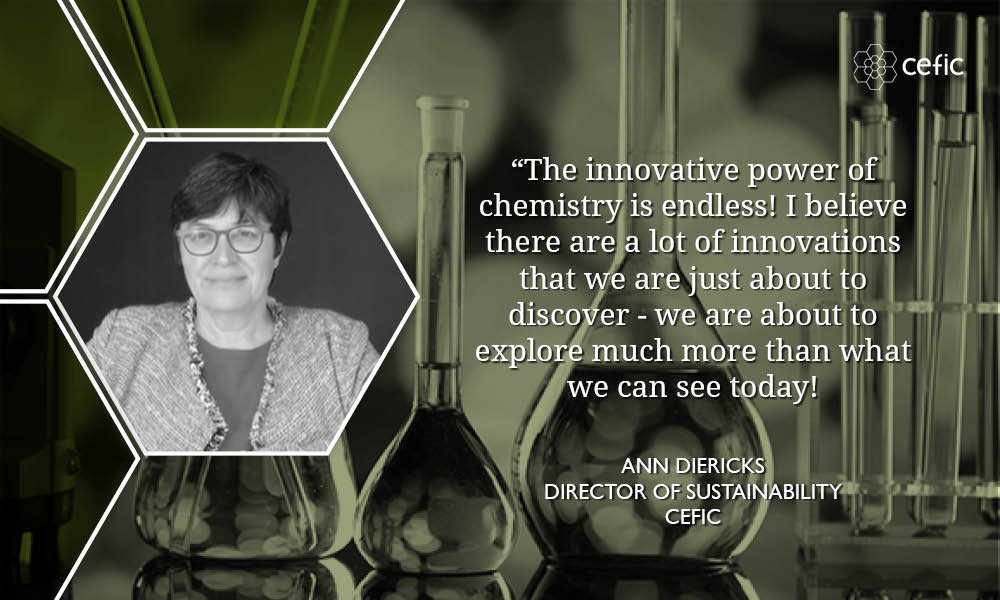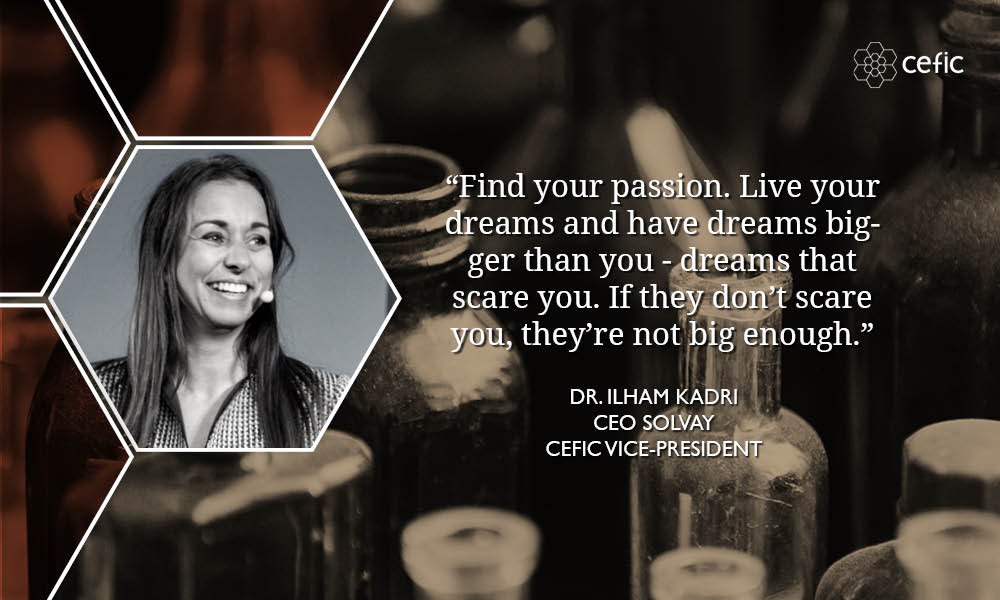The chemical journey
An unexpected journey through molecules, petri dishes, and ingenuity
Thank you for joining us in this chemical journey! You can skip directly to the chemistry of the past, the chemistry of today, the chemistry of the future, or simply scroll down to the introduction and let us guide you through the journey.
It is 1774. In Bowood House, an estate in the South of England, Joseph Priestley is researching different types of air. He captures gases in an inverted container and traps them inside by placing the container in a layer of water or mercury. The main question for each gas the chemist traps: does it sustain life and can it fuel a fire?

As fire needs oxygen to burn, a fire in a sealed container will eventually consume all the oxygen and die out.
In testing the effects of adding a green plant to the container after all oxygen is removed, Priestley makes one of his most important observations. As long as it is exposed to sunlight, the plant ‘refreshes’ the air, making it capable of sustaining life again. Priestley observed a process we now know as photosynthesis.
Photosynthesis, as we all probably remember from our school days, is the process through which “plants use sunlight, water, and carbon dioxide to create oxygen and energy in the form of sugar.”
This knowledge, gathered over 200 hundred years ago, plays a vital role today in helping us understand how rainforests, woods and swamps capture CO2 and help us fight climate change. But, digging further, we also realise that the very same process analysed by Priestly is the basis of the creation of “biomass”, which can be used as a feedstock in bio-based chemistry.
No scientific discipline exists in isolation and most scientific discoveries are multidisciplinary. Advancements in chemistry have often been inspired by or had a spill-over effects on physics and biology.
At the same time, no scientific discovery stands on its own . The experiments from years, decades, and even centuries ago, still live in the breakthrough discoveries of today and tomorrow. And just as the first observations of photosynthesis in 1774 were vital for addressing climate change today , the young minds working on the cutting edge of innovation today will make discoveries that might be crucial pieces to solving puzzles of the future.
Chemistry’s millionth birthday?

At a minimum, the history of chemistry goes back millions of years. On that primordial earth, chemistry kickstarted life on our planet. A chemical reaction created amino acids and nucleic acids, the building blocks of proteins and DNA. Since then, chemistry has continuously shaped the world we live in.
But, while the core pillars of chemistry are still the same, our understanding of the meaning of the word “chemistry” has changed. From chemical reactions in nature to synthesising the same substances in a chemical lab, the journey has gone a long way, and there is still a long way ahead.
Let’s embark on this chemical journey, from chemistry of the past to chemistry of the future and get a closer look at the great minds and their discoveries which have profoundly changed the way of we live now.
Chemistry of the past
While chemistry, as well as physics, is inextricably intertwined with life on this planet, little was known about its processes and secrets up to a few centuries ago. But even before then, several chemical processes and reactions had been known for centuries. Indeed, it was the IV century BC when Democritus formulated for the first time an atomic theory of the universe. Let’s us also not forget that, in their quest for the philosopher stone, many alchemists fathered many (accidental) chemical discoveries. One example? We have two stories: the discovery of phosphorus and of German porcelain.
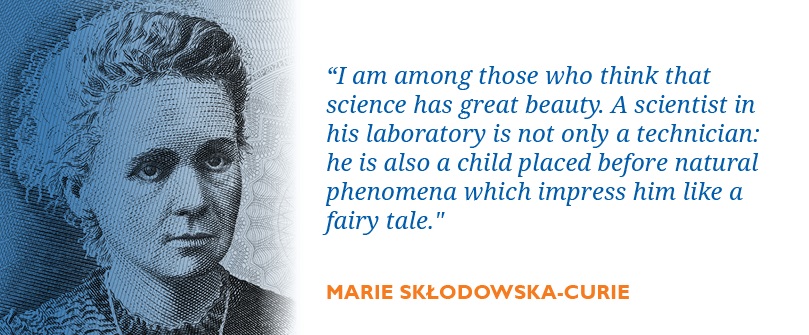
But, it wasn’t until 1615 that Jean Beguin published the first ever chemical equation. These diagrams showed the result of reactions in with two or more reagents, the substance or compound added to a system to cause a chemical reaction.
Building on the crucial work done by chemistry pioneers like Beguin and Priestly, Boyle and Lavoisier, the rate of innovations and discovery drastically sped up in the last two centuries.
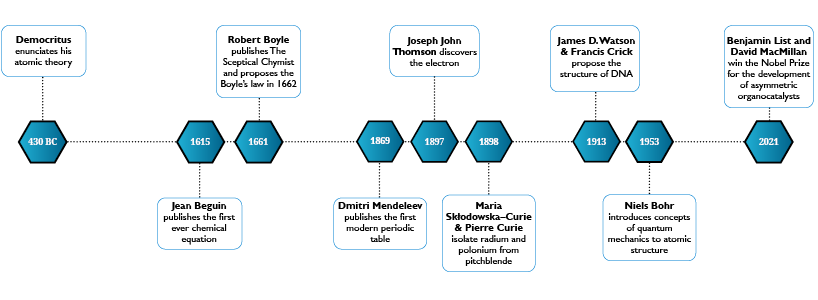
Science improving life
Both as a fundamental science and as an applied science, chemistry holds the key to improving our lives, sometimes in unexpected ways.
Innovation in chemistry has always been a major driving force of technological progress. Just look around you. All of life’s necessities are touched by chemistry: from the device you are reading this page on, to clothing, furniture and medicines.
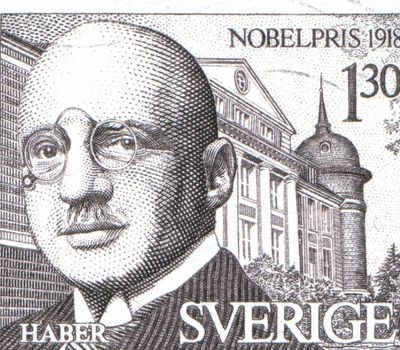
Fritz Haber
Nobel Prize in Chemistry in 1918.

Carl Bosch
Nobel Prize in Chemistry in 1931
Fritz Haber and Carl Bosch for example, who won a Nobel Prize in Chemistry in 1918 and in 1931 respectively. By developing a key process to produce in a cheaper and less labour intensive way the key ingredients for fertilisers, they helped supply the world with food. Or Jacobus Henricus van ‘t Hoff Jr., who discovered processes to make medicines more efficient and won the very first Nobel Prize in chemistry in 1901.
Chemistry has changed and continues to change the course of our world: from enabling us to harvest nuclear energy (Niels Bohr, Nobel Prize in Chemistry in 1922), to learning more about radiation and its effects (Marie Slodowska Curie, Nobel Prize in Chemistry in 1911)

Jacobus Henricus van ‘t Hoff
Nobel Prize in chemistry in 1901
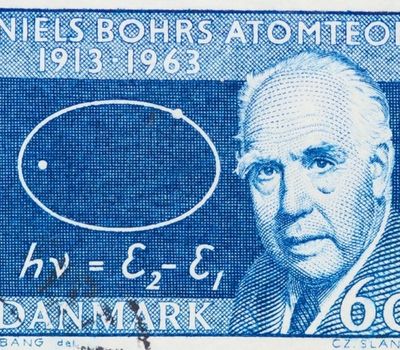
Niels Bohr
Nobel Prize in Chemistry in 1922
However, it is clear that none of these innovations could have ever happened without some key elements. One of them is, of course, an environment that enables the most brilliant minds to emerge and work. Next to it, was, and still is, the importance to have what we call “technology neutrality” which offered them the opportunity to explore freely and break the status quo for decades to come.
Because of these great minds and their groundbreaking work, the chemical industry earned its place as a key pillar in most value chains; from feeding the world in the agricultural and food sectors, to keeping people healthy with vaccines and other medical breakthroughs. But the journey has not ended. The sector has evolved, is evolving, and will keep evolving.
And just as science and the technologies are evolving, we at Cefic are working together with the European Commission and other key stakeholders to make sure the minds of today and tomorrow have the right framework in place to discover the solutions of the future.
The generations that came before us, our generation today, and every future generation, has the potential to produce a new Curie, a new Einstein. But we do not just need to make sure they can emerge, we have to make sure their talent, their genius, tackles needs bigger than the present. Our mission today is to ensure that the bright minds around us are empowered to work on the solutions we need for a climate-neutral society. This is what Cefic does: we create a bridge between policy and industry, we outline a clear pathway that connects the discoveries of the past, the human capital of the present, and the potential of the future.
Chemistry of today
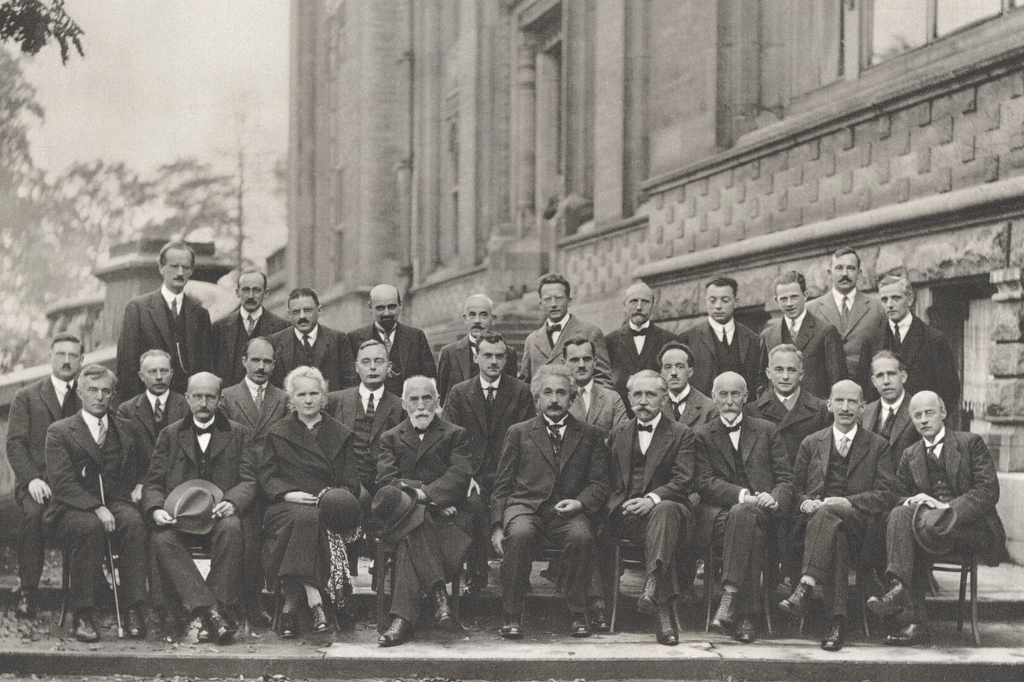
As it is often said, a picture is worth more than? paints a thousand words. And few pictures have inspired more, and spoken louder, than the famous 1927 Solvay Conference picture. Often referred to as the ‘most intelligent picture ever’, it features 17 (future) Nobel prize winners. Schroedinger, Heisenberg, Curie, Einstein, Bohr and Langmuir are just a few of the great minds that posed for the camera in the Brussels of 1927.
Still today, the 1927 Solvay conference picture is one of the most recogniszable, and most powerful, photographs in science. It can be found in schoolbooks and laboratories, on professors’ desks and on the walls of teenagers dreaming to change the world. But, most importantly, its footprint is found in the work carried out every day by thousands of researchers. Just like the footprint of the great minds of today will reverberate for generations to come.
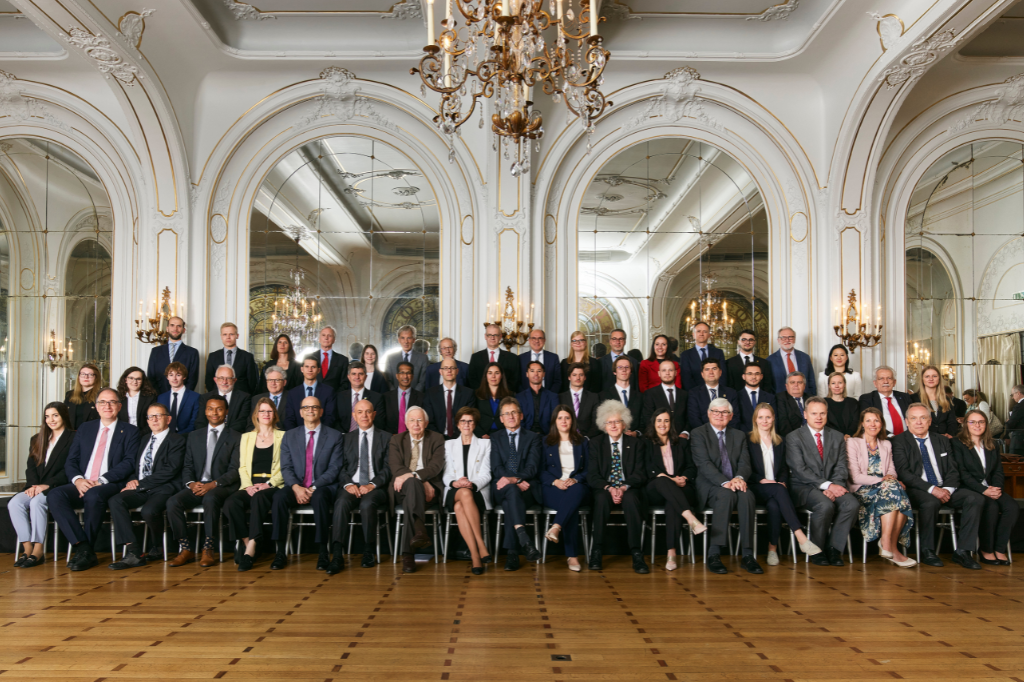
Nearly a century after that picture was taken, during Cefic’s 50th anniversary celebration in May 2022, Cefic gathered the innovators of today in Brussels. Building on the tradition, we recreated the iconic 1927 picture. Our goal? Connect generations of scientists and build bridges to pass on scientific knowledge between the scientists at the forefront of the next chemical breakthroughs.
During the event we brought together renowned chemistry professors, PhD students and Nobel prize laureates. To ensure that scientific progress and innovation can find their way to the market, the CEOs from several chemical companies also joined the event
In an environment where problems become increasingly complex and multifaceted, collaboration across different sectors and different stakeholders is necessary. No single actor can single-handedly tackle climate change or develop a solution to increase Europe’s autonomy. But multidisciplinary and diverse teams can go beyond what we already see and imagine the solutions of tomorrow.
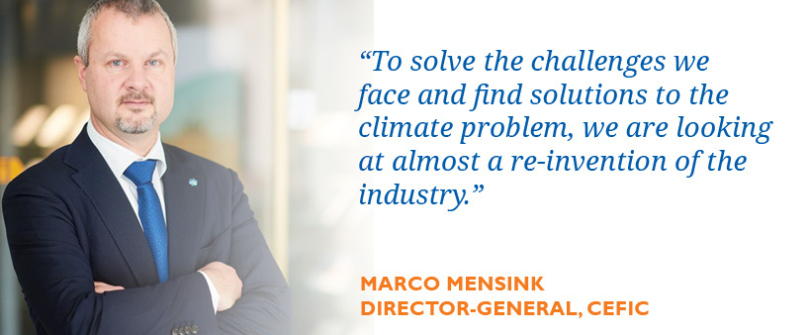
This lesson is especially true today, when we are experiencing a profound shift in our way of life.. Just as science often offered a helping hand to solve crises of the past, it is likely to be instrumental in addressing the challenges of today.
Want to be part of the solution?
When presenting the EU Green Deal, Commission President von der Leyen announced that she wanted Europe “to become the first climate neutral continent by 2050.” Reaching this goal will only be possible with the help of climate-neutral and circular economy solutions developed by our industry. Download our brochure “chemicals for the green deal”.
From academia to the private sector, researchers all around the world are applying their knowledge and skills and collaborating with a broad array of stakeholders to solve the challenges of today and “prepare the ground” for the generations to come.
So, what challenges are our scientists working on today? And what innovation would we see on a journey across the European chemical laboratories?
Climate neutrality through chemistry
The chemical industry shares the ambition to become climate neutral by 2050, while developing solutions to help other sectors reduce their emissions and improve their energy efficiency. Indeed, the chemical industry is indispensable for a strong and sustainable European economy of the future. Chemicals are present in almost every strategic value chain.
But how concretely can chemistry support the transition towards climate neutrality?
- By developing technologies to produce (green) hydrogen (discover our case studies ;
- By producing innovative materials for wind turbines;
- By improving EV batteries and making them more recyclable;
- By producing materials that make our buildings more energy efficient
Want to discover more case studies on how chemistrycan contribute to climate neutrality?
Chemical solutions to go circular
Chemistry is central to the ideal of the circular economy. Whether talking about paper, battery or plastics recycling, the process is fundamentally chemical.
Scientists and engineers are working to perfect the way in which we can turn waste into valuable resource and lower our environmental footprint. From complimentary technologies to recycle plastics, to using “recycled” carbon molecules, ChemistryCan drive the circular economy.
Want to discover more about Chemical Recycling making plastic circular? Visit the chemical recycling exhibition.
Chemistry to enhance the quality of life
Chemistry is an integral part of almost everything in our life: chemistry plays a part in developing the molecules for the frames of the glasses you are wearing, the medical devices used in hospital every day, and even the sport clothes in your wardrobe. And every day, we innovate towards enhancing comfort in our daily lives in unexpected ways.
Ever heard of the concept “Safe and sustainable by design?”
We define it as an iterative process guiding innovation and the placement on the market of chemicals, materials, products, processes and services that are safe, and deliver environmental, societal, and/or economical value through their applications.
Chemistry at the frontier of material science
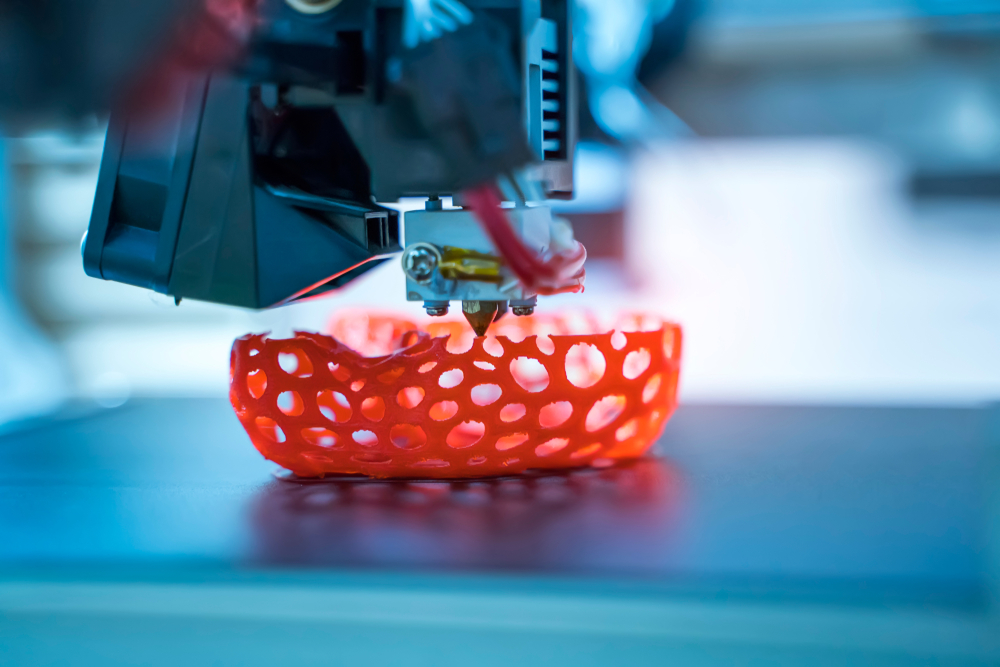
According to the Cambridge dictionary, materials are “physical substances that things can be made from.” So, of course, materials are everywhere in the world. The pervasiveness of materials also means that any innovation happening to those building blocks would have wide repercussions across all value chains, creating new innovation opportunities in multiple dimensions and sectors.
And chemistry can catalyse this opportunity: working on the molecular level, chemistry has the ability to create the next generation of materials, the so-called “advanced materials.”
“Advanced materials are the invisible innovations needed in sectors varying from healthcare to construction. They can make buildings more durable and energy efficient, and vehicles lighter and safer”
Daniel Witthaut, Cefic’s Executive Director Innovation
As recognised in the Materials 2030 Manifesto published earlier in 2022, “Materials, especially advanced materials, are the backbone and source of prosperity of an industrial society:” they can make our buildings more energy efficient, reduce the repairs and maintenance needed thanks to self-healing polymers, or even further advance 3D printing.
Discover advanced materials further with SUSCHEM “Strategic Innovation and research agenda” report.
Leaders of today for a brighter tomorrow
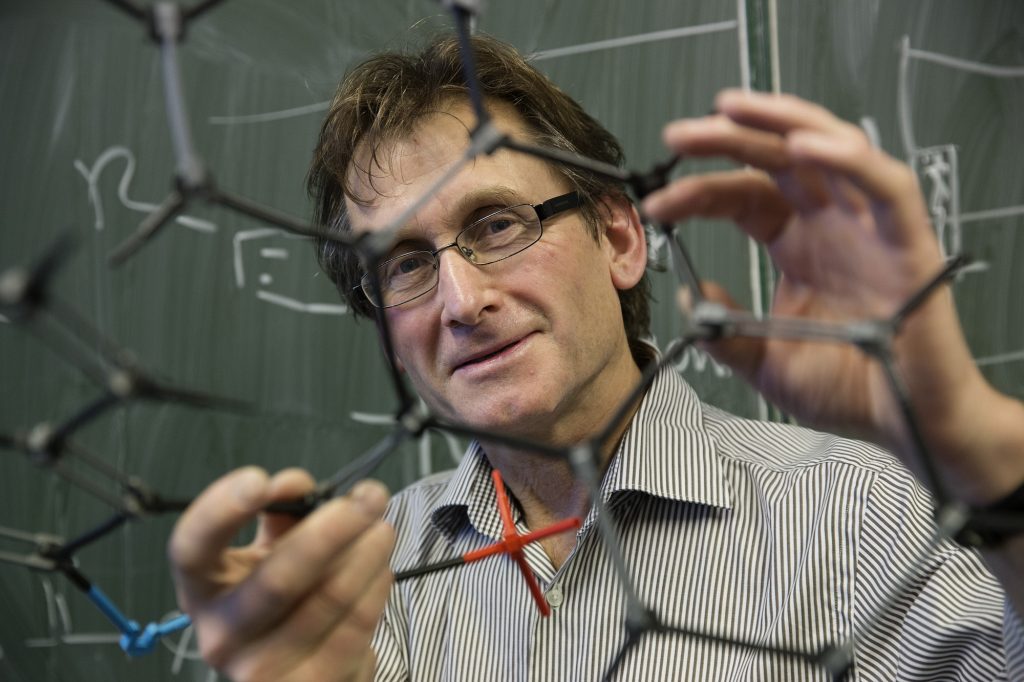
Exceptional people can achieve exceptional outcomes if the conditions around them allow enough leeway for their imagination to run free. One example? At our 50th birthday celebrations we hosted Ben Feringa. Together with two colleagues, Jean-Pierre Sauvage and Fraser Stoddart, he was awarded the Nobel Prize in 2016 for their invention of molecular machines. Inspired by the myriad of “natural” molecular machines already present in the human body, they envisioned and worked on molecular machines that imitate those biological processes with synthetic molecules.
However, imagination alone is not enough to break the status quo. Visionary leaders are the ones that can set the conditions for the brightest minds to see the world that will be.
But what makes a leader “visionary?” According to the Michigan State University, visionary leaders:
- See the world differently;
- Help others see their vision;
- Turn the vision into reality.
What we would add, is that a visionary leader has the ability to see invisible trends and draws connections across time and scientific fields. Only then can they pave the way to the solutions of the future, converting times of crisis into times of opportunities.
However, while chemistry today is achieving massive results, the journey is not finished. It lives and will keep living in the scientists of tomorrow. And, as Nobel prize laureate Ben Feringa told Cefic in a previous interview:
“We have to train our students and young people to go towards these opportunities, be daring and develop the methods and techniques and the skills to build the industry of the future—and that is what we are going to do.”
Ben Feringa
Chemistry of the future
Just as Joseph Priestley spent his days in Bowood House experimenting with gasses, today’s scientists are diving headfirst into their own processes of trial and error. Through their own experiments in universities, companies or research institutions, they will develop new solutions for the biggest societal challenges like recycling, energy storage, and reducing pollution.
But tomorrow, the next generation will be called in to continue their journey. And what does this new generation mean?
In May 2022 Cefic gathered a group of young PhD chemistry students from all across the EU to ask them one big question: “what is the biggest challenge for the EU chemical industry?”
When taking up his professorship at the University of Amsterdam, Nobel Prize winner of 1901 Jacobus H. van ‘t Hoff argued that all the most prominent scientists shared a great imagination since it plays a key role in the scientific process.
“We shall designate by ‘Imagination’ (Phantasie), the capacity to visualise a particular thing so clearly, that all its properties can be recognised with the same certainty as if the object were directly observed.”
Jacobus Henricus Van’t Hoff, 1874
And chemistry offers a great blank canvas for imagination. When we asked the future generation of great chemists why they chose to study chemistry over other disciplines, one of the most common answers focused on the creative power of chemistry.
“Chemistry allows us to re-imagine reality because we can stich atoms together in different shapes and forms.”
Thomas Hansen, Vrije Universiteit Amsterdam
And this is why chemistry is at the very heart of every process.
Let us challenge your “limits” showing you the solutions the next generations of innovators are working on!
Meet Alena Bundinska
(ETH Zurich)
Meet Roy Aerts
(University of Antwerp)
Meet Katarina Mužina, PhD
(University of Zagreb)
But while imagination and courage play an important role in “going beyond,” they do hold all the answer. To address the complex, multifaceted and multi-sectorial challenges of today and tomorrow, we need to work together. Cross-sectorial collaboration bringing together people with different background and expertise, different generations and genders, different values and with different point of views is what will determine our success.
And the need to collaborate and to imagine new solutions become increasingly important for a sector that is facing a double twin transition, which means going climate neutral, circular, digital and create safe and sustainable chemicals.
The importance of diversity and inclusion
A competitive advantage, financial results, long-term value creation; they are just some of the advantages of a diverse company. No wonder that according to McKinsey in recent years organizations across the world have been giving diversity and inclusion the attention it deserves. And, just as for any other business, the chemical sector benefits from an inclusive and diverse workforce.
But let’s take a step back. What role does diversity actually play in research and innovation? When reflecting on this question, Dr. Andrew Schwartz, Lead Scientist at UC Berkeley Central Sierra Snow Laboratory, said: “Increasing diversity in science by incorporating people of all genders, ethnicities, backgrounds, faiths, and sexual orientations will only serve to broaden our perspectives on research questions and produce better results.”
As highlighted by Nature, a diverse team has a higher competitiveness [1] and “is more likely to pursue questions and problems that go beyond the narrow slice of humanity that much of science (biomedical science in particular) is currently set up to serve [2]”.
And one step to increase diversity and inclusion is a strong commitment towards closing the gender gap: from restructuring the way in which public funds are allocated to programs that encourage girls to pursue STEM careers and increase the share of women sitting around the decision tables. Many small drops are changing the scientific environment and create the powerful diverse collaboration that can help us tackle the challenges of tomorrow.
[1] These labs are remarkably diverse — here’s why they’re winning at science (nature.com)
[2] Science benefits from diversity (nature.com)
“We sometimes tend to think that life is a linear evolution. It is not. The driver is imagination and this is what will drive us to the future. What has been true for the last 50 years in terms of developments and methods, notably on chemistry, are not necessarily what is needed and how it will happen in the next 50 years. Where we will be in 50 years is therefore unpredictable. We need to have trust that the imagination will create the path for the future and faith that this path will be the right one.”
Prof. Ari Koskinen
Emeritus Professor, Aalto University, Helsinki
External sources:
- Why Diversity In Science Is So Important (forbes.com)
- Science benefits from diversity (nature.com)
- She Figures 2021 (europa.eu)
- New European centre of excellence for gender | EurekAlert!
- The future of women at work: Transitions in the age of automation | McKinsey
- Gender parity can boost economic growth. Here’s how | World Economic Forum (weforum.org)
- Mapping gender equality in STEM from school to work | UNICEF Office of Global Insight & Policy
- Why everyone benefits from closing the gender gap | World Economic Forum (weforum.org)
- Chemistry History (columbia.edu)
- Chemistry: How it all started (unesco.org)
- Britannica: chemistry Definition, Topics, Types, History, & Facts
- Timeline_of_chemistry (chemeurope.com)
- SciTech Daily: Primordial Soup: Scientists Discover New “Origins of Life” Chemical Reactions
- National Geographic: Photoshyntesis
- ACS Chemistry for Life: Joseph Priestley and the Discovery of Oxygen
